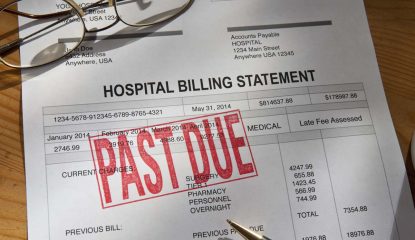Woman’s Allergy Test Cost Nearly $50,000
By Consumers For Quality Care, on November 6, 2018

Janet Winston has always had sensitive skin. For years, she avoided lipstick and cosmetics. After an antifungal cream prescribed to treat a rash only made it worse, she decided it was time to see a specialist, Kaiser Health News reports.
Knowing her local dermatologist would be booked for months, Winston drove six hours to Stanford Health Care, where the physician recommend patch testing – a process where tiny containers of allergens are taped to patients’ backs for a span of three days – to determine what she is allergic to. While her physician warned it might be expensive, Winston was not worried because Stanford was in-network and her insurance had always provided her with reliable coverage.
Winston ultimately learned that she was allergic to — among other things — linalool (a compound of lavender and other plants), the metals gold, nickel and cobalt, the ketoconazole cream prescribed to treat her persistent rash, the antibiotic neomycin, a clothing dye, and a common preservative used in cosmetics.
The bill that followed Winston’s care was more than she could have ever expected: a whopping $48,329.
The chemicals taped to Winston’s back came with a steep $399 per allergen list price. Her insurance, Anthem Blue Cross, paid Stanford more than $11,000. Then, Stanford charged Winston more than $3,000 – a share of the negotiated rate.
The “usual, customary and reasonable” charge for testing a single allergen in the high-cost San Francisco Bay Area is about $35, said Michael Arrigo, a San Francisco-based medical billing expert witness who also reviewed Winston’s bill. “The data seems pretty conclusive that the charges in this case are inflated.”
Medicare charges even less per allergen, around $16.
Winston’s case highlights how some health providers set exorbitant rates, knowing they’ll ultimately be paid a lesser amount. Patients rarely pay these rates — known as “chargemaster” or list prices — and they can generate headlines for the $100 aspirin. But such list prices, as the starting point for negotiations and discounts, do help determine the amounts insurers pay, and ultimately what patients pay as their share of cost.
The size and scope of large medical systems like Stanford creates consolidation that allows them to inflate prices more than smaller providers. Harvard University health care economist Leemore Dafny says that large systems like Stanford pressure insurers to paying big.
“Everyone wants to point fingers at the providers, but … a lot of times [insurers] roll over and pay the rates,” she said.
In other words, Stanford charged Winston’s insurer $48,000 because it could.
Kaiser Health News says that consumers should be careful to ask specific questions about pricing: “’Expensive’ and ‘cheap’ can have hugely different meanings in the high-priced U.S. health system.”
In the end, Winston contested her bill and got her co-insurance share reduced by nearly half.
“I was grateful I had so much insurance, and that it was in-network, and I could afford the [final] bill,” Winston said. “On the other hand, I thought, ‘How can they get away with this?’ Most Americans could never afford this procedure, at least at this facility, and it made me think about the grand piano in the lobby.”




